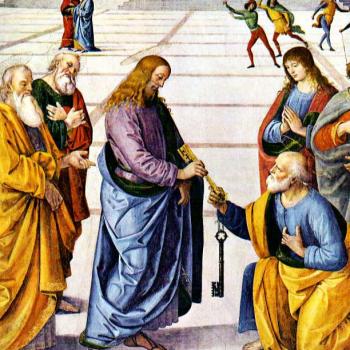We secured permission from the police and the manager of the hall to tract the people as they left the show. . . . We distributed a large number of pamphlets and tracts. Of course some of the people would not accept them, others tore them up in our faces, but others were anxious to get them and would not leave until they had secured one. That was the best stroke of advertising that we have put forth since coming over here. In three evenings we let more people know that we are here than we could have done in three months at ordinary tracting from door to door. It was a rare experience but one in which, I am sure, we did a great amount of good.
While baptisms did decrease during the height of the anti-Mormon crusades, the 1924 campaign was, according to Malcolm Thorp, unsuccessful "largely because the public image of the Mormons was undergoing change. . . . The Church was seen as being transformed into just another of the multitudinous sects in America."
To be sure, when Trapped by the Mormons entered distribution in Canada in late 1924, Church officials took measures to prohibit its showing in the United States. Canadian Mission president Joseph Quinney wrote to Apostle and Utah Senator Reed Smoot about Quinney's failed negotiation with Canadian censors to have the film edited before general release. Smoot had been in correspondence with President Heber J. Grant about contacting the film's distributor in order to discourage distribution of Trapped by the Mormons in the United States. Only a few years earlier, Smoot was successful in having two feature films based on Zane Grey novels, Riders of the Purple Sage and The Rainbow Trail, taken out of European distribution by the Fox Film Corporation. There is no known documentation of how Senator Smoot negotiated with the distributor, but there is no indication that Trapped by the Mormons was shown anywhere in the United States.
The whereabouts of Winifred Graham's papers are, at this writing, unknown. Similarly, the records of Master Film Company have not become available for research use. However, in the absence of such historical documentation, the similarities shared by Graham's book and Trapped by the Mormons to the vampire imagery of Bram Stoker's Dracula require serious attention. In this article, filmic similarities to Graham's and Stoker's descriptions will be limited to references to the already cited Dracula, directed by Tod Browning and featuring Bela Lugosi in the title role. The similarities imply an attempt by one author, and later by two filmmakers, to capitalize on recurring images of the vampire in popular culture at that time. A few of the many related images to be examined in this article are those that I will identify as stranger from a strange land, mesmeric powers, and the kiss of death.
Stranger from a Strange Land
In both Dracula and Trapped by the Mormons, the mystique of the Romanian Count, the Mormon missionary, and their areas of origin have much to do with how they were perceived by those around them. In writing Dracula, Stoker knew that Transylvania was a veritable mystery land to most Britons. George Bernard Shaw's play Pygmalion, written in 1912, refers to the "prince from Transylvania," connoting a powerful person from an imaginary land. As remote as the Romanian "land beyond the forest" was to English readers, Stoker, in contrast to Graham and her Mormon novels, exhaustively researched locales, topographical maps, and railroad timetables in order to make his story as real and as believable as possible.
Except for her trip to Pittsburgh in 1919, Winifred Graham never visited the United States, let alone Utah. The accounts in her novels of life among the Mormons and her fictional descriptions of Salt Lake City came from secondhand and prejudicial sources. In The Love Story of a Mormon, Graham described, via Ziba Wayne's utterances, "the great bridge, a masterpiece of architecture, which for twenty-four miles crosses the Salt Lake." That marvel would have been quite a sight -- had it ever been built. Her other Mormon-centered novels reveal additional glaring errors in Utah geography that, taken together, enhance the sense of imprisonment of the Mormons in their valley dominated by tyrannical leaders. This mystique, suggested by faraway locales, was echoed in Jacinth's confession to Wayne, "I don't know anything about your country or your faith." He replied with a play on an oft-quoted scripture, "I astonish you because I am not of your country, so your ways are not my ways."
The physical remoteness of the Mormon elder's land of origin is also, in Graham's books, associated with a Machiavellian Mormon worldview. "All is fair when laboring for the gospel," Wayne declared. "I speak with assurance, because we Mormons can beat the world at any game, since we represent the holy priesthood, and have been entrusted with the keys of the heavenly kingdom." In another passage, Wayne justifies his subterfuge to Jacinth in this manner: "We are permitted to stray from the paths of truth if, by so doing, we are furthering the destiny of one about to be sealed to Mormonism."




